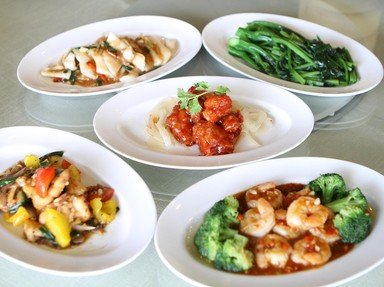Quiz Answer Key and Fun Facts
1. Long-life or longevity noodles eaten on one's birthday trace their origin back to which dynasty considered a golden age of Chinese history when Emperor Wu ruled?
2. What type of organism is black moss, a hair-like substance that is a regular ingredient in meals for the Chinese New Year celebrations?
3. Tangyuan, little round balls made of glutinous rice flour, are often eaten during the Lantern Festival. However, they are also a common sight during which other festival associated with the shortest day of the year in the northern hemisphere?
4. Lunar appreciation is a focus of the Chinese Mid-Autumn Festival. Appropriately, which delicacy is the ideal gift to provide at this time?
5. In Chinese culture, coloured eggs are gifted to family and friends to celebrate the birth of a newborn. What auspicious colour are these eggs?
6. Chongyang Cake is a traditional cake of nine layers eaten at which festival, observed on the ninth day of the ninth month in the Chinese calendar?
7. Laba congee is a dish eaten during the Laba Festival on the eighth day of the twelfth lunar month. Whose enlightenment does this day celebrate?
8. Popular at dragon boat festivals, zongzi is a glutinous rice dish that is traditionally wrapped in what kind of leaf?
9. In some traditional Chinese weddings, a cooked whole pig represents the bride's purity and is an important part of the wedding ritual. How is this crackling delicacy prepared?
10. New Year paintings in China often show children holding fruit that represent the "Three Abundances" in Chinese culture. Two of the fruits are non-native fruits - the citron melon and the guava or pomegranate. Which fuzzy fruit native to China is the third?
Source: Author
tazman6619
This quiz was reviewed by FunTrivia editor
Bruyere before going online.
Any errors found in FunTrivia content are routinely corrected through our feedback system.
